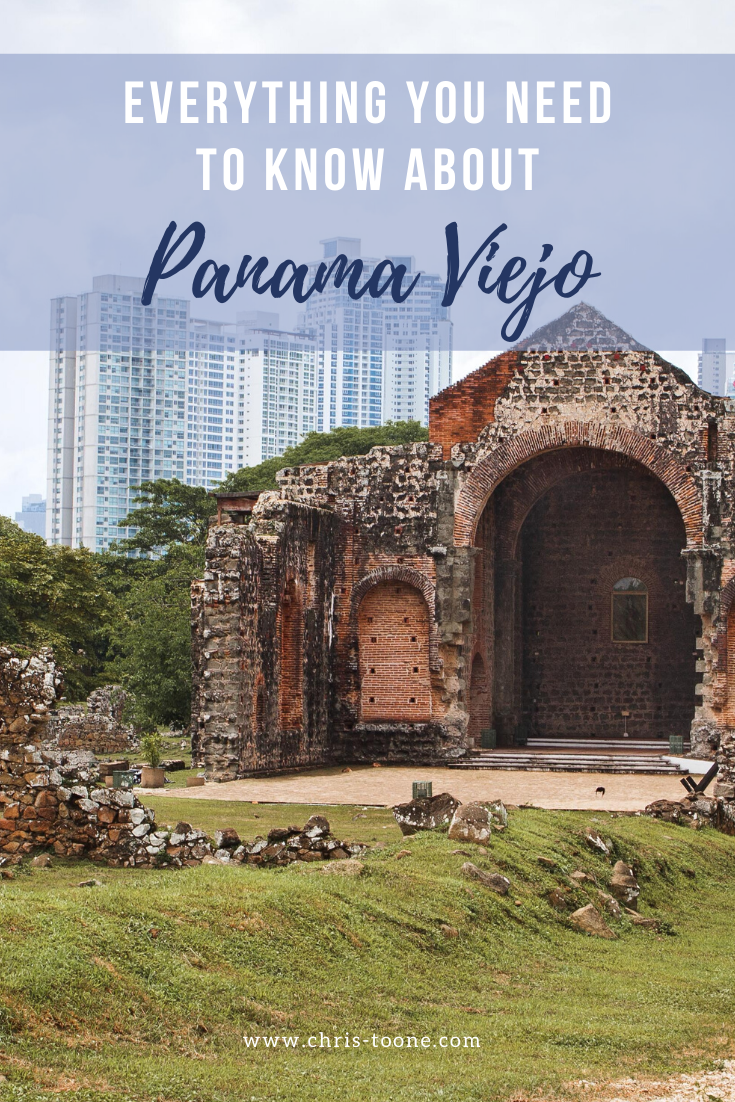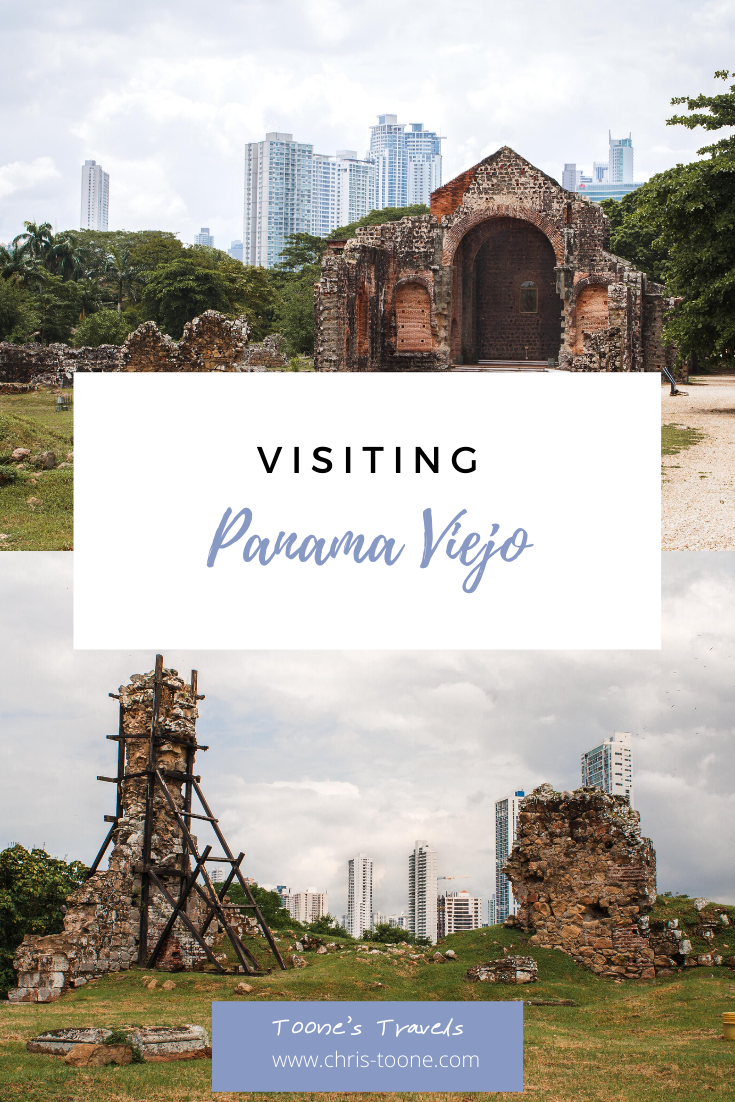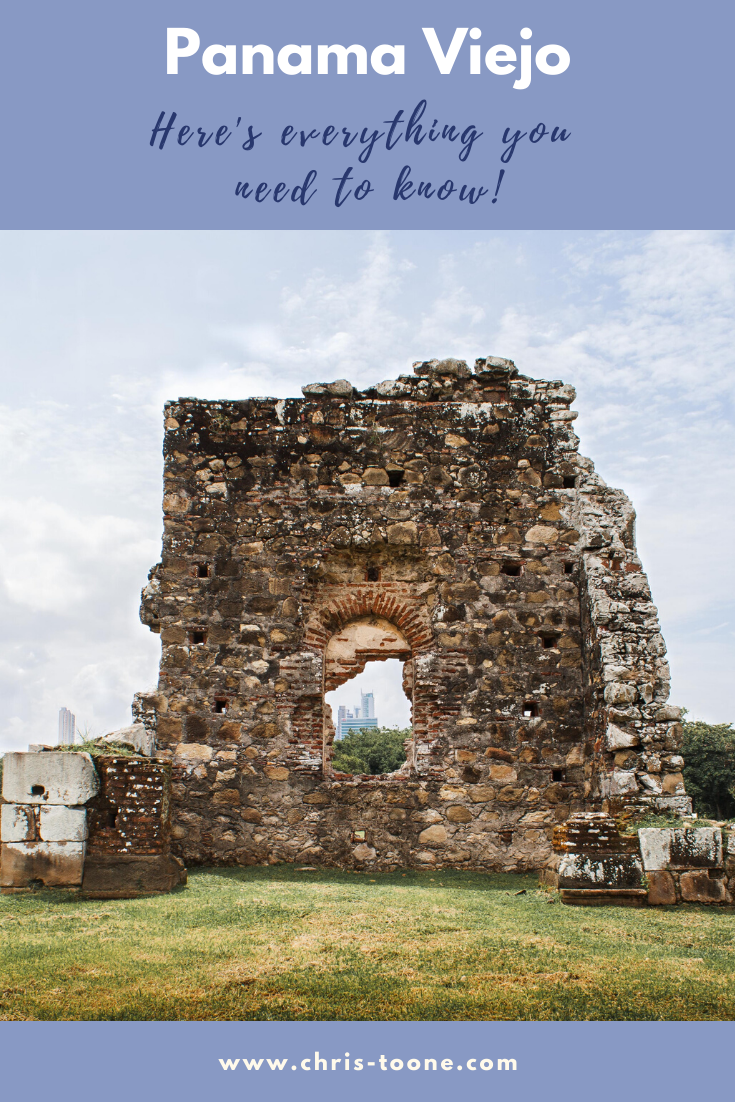Visiting Panama Viejo: Everything you need to know before you go
Plan a trip to Panama City, Panama and I’m confident you will quickly discover Casco Viejo, which directly translates as “old town”.
The truth is, although the neighborhood is historical and full of colonial-era architecture, it’s not the original Panama City settlement.
Travel 8km northeast of Casco Viejo and you’ll find Panama Viejo, a sprawling 28 acre space full of crumbling ruins that offers visitors insight into the very first colonial outpost in all of Panama.
Here’s everything you need to know before your visit!
Looking for more Panama ideas? Check out these posts:
THE HISTORY OF PANAMA VIEJO
The first European city built along the Pacific Ocean in the Americas, Panama Viejo, was established in 1519 by Pedro Arias Davila during the Spanish Colonial era.
Situated along a shallow cove, its prime location quickly created a trading metropolis, most notably of gold and silver. Although the settlement was prospering, the ships that transported treasures back to Spain quickly caught the eye of pirates.
In 1671, the attacks came ashore as the famous pirate, Captain Henry Morgan, went for the jugular, ransacking and pillaging Panama Viejo to the point of destruction.
When it was all said and done, thousands of people had perished and the city was left in ruins.
Rather than re-build, the survivors moved and established a new town in what is presently known as Casco Viejo (completed in 1673).
The peninsula in which the new city was settled upon served as a natural geographic defense system while walls, which are still standing to this day, were built as reinforcements.
Fast forward to 1997, Panama Viejo was established as a UNESCO World Heritage Site and is now the most well-funded archaeological site in the entire country.
Ruins at the Panama Viejo UNESCO World Heritage Site in Panama City, Panama
GETTING TO PANAMA VIEJO
Panama Viejo is located on the northern end of the city, 8km away from Casco Viejo.
Parking is limited so it’s best to arrive via taxi or Uber, otherwise you can expect to have to park a good distance away and hoof it to the entrance gate.
If arriving by bus, take the following routes:
Panama Viejo-Via Israel-Albrook (departs from Balboa and from Albrook)
Old Panama-Seafood Market (Exits the Seafood Market)
Panama Viejo-Cinta Costera (Departs from Albrook)
Albrook-Via Porras-Cincuentenario (Departs from Albrook and from May 5)
Address: Panama Viejo, Vía Cincuentenario, Panamá, Panama
Phone: +507 226-8915
Hours: 8am - 5pm, closed on Mondays
ENTRANCE FEES
General entrance to the Panama Viejo complex includes access to the walking path through the archaeological park, museum, and viewing platform from the Cathedral tower.
National adults: $10.00
Foreign adults: $15.00
Children: $2.00
Don’t want to plan your trip? Consider one of these top tours:
WHAT TO PACK FOR PANAMA VIEJO
Water Bottle - There is a cafe near the Cathedral tower, but bring your own bottle and save some money.
Daypack - The best way to explore the ruins is to walk amongst them, so it’s important to have a convenient way to carry your camera, water bottle, sunscreen, etc. This Cotopaxi Allpa is my new go-to!
Rain jacket - Rainy season hits Panama between the months of April and December. I was caught huddling under a tree for shelter more than once during my visit. Don’t be like me; go prepared.
Comfortable Shoes - It’s a 15 minute walk from the ticket booth to the heart of the ruins, so make sure to dress accordingly (a free shuttling service is provided for those in need).
Panama SIM Card - This guarantees you can you easily get to/from Panama Viejo by using apps like Uber. Check out the world’s first e-sim store to make things easier.
Power Bank - It’s easy to spend up to two hours wandering around the ruins. Be sure to pack some extra power to be able to easily charge your devices. You don’t want to get caught in the rain with a dead phone battery!
WHAT TO EXPECT AT PANAMA VIEJO
First things first: Visit the museum on the grounds to get a better understanding of all that Panama Viejo represents.
The exhibits trace history from pre-colonial times through the era of Spanish conquistadors as well as original maps of the settlement and history of pirate activity in the area.
At the very least, it serves a great and informative shelter from the rain!
Once you feel your knowledge is sufficient, then it’s to time to wander amongst the ruins.
Ruins of the Iglesia y Convento de San Francisco looking towards a modern Panama City, Panama
There are set pathways throughout the grounds, but it’s completely acceptable to get up close and personal as long as a sense of respect is maintained. Remember: You don’t want to be the tourist that’s caught damaging a World Heritage Site!
The archaeological complex was fascinating in its own right, but what struck me the most was that the ruins were situated next to a major highway with downtown Panama City as a backdrop, skyscrapers and all.
The contrast between old and new was stark and certainly thought-provoking. It really gave a whole new perspective as to the growth that the area has seen over the centuries, so don’t forget to look beyond what first meets your eyes. See the whole picture and take a moment to process the spectrum of history that stands before you.
Iglesia y Convento de la Concepción is one of the most well-preserved buildings in the complex while the tower of the Catedral de Nuestra Señora de la Asunción allows visitors the chance climb the stairs to the top and look out over the expansive ruins.
The Iglesia y Convento de la Concepción standing tall at Panama Viejo
Other buildings of note include the Casa Reales (Royal Houses) where the center of the town’s power resided, Cabildo de la Ciudad (City Hall) and Casa Alarcón (Panama Viejo’s largest known private residence).
Although visitors flock to Panama City to learn about the canal and roam the colonial quarters of Casco Viejo, a visit to Panama Viejo is a must-do in order to grasp the deep history of this fascinating place. It’s worth the 15 USD entrance fee!
Have you been to Panama City before? What were your thoughts? Let me know in the comments below and until next time, stay safe & happy travels!




















